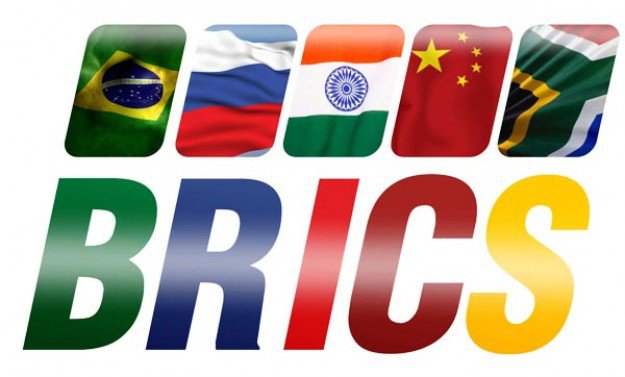
India has had a closed mind, and influential sections of national opinion cling to the notion that bellicosity is the signature element of China’s approach to India. The unfortunate coincidence is that many who indulge in such seasonal tirades against China also happen to be passionate advocates of a US-Indian strategic embrace. Their hysteria dovetails into an ulterior agenda.
(This is the third in a series on India China relations. Part-1 India’s forever wars and forever warriors was published on Feb 25 ; and part-2 on Feb 27.)
At a press conference in Beijing on Feb 22 Monday, when asked about China’s attitude toward BRICS cooperation and India’s current chairmanship of the grouping in the backdrop of the border tensions in Ladakh, the Chinese Foreign Ministry Spokesperson Wang Wenbin described BRICs as a cooperation mechanism with “practical cooperation and rising influence” which can be a “constructive force for stability in international affairs.”
Ambassador Wang underscored China’s support for India in hosting this year’s BRICS meetings and expressed readiness to work with Delhi to “strengthen communication” and advance cooperation in diverse fields. Beijing’s keenness to work with India within the BRICS framework is apparent, no matter the vicissitudes in the bilateral relationship.
Both in timing and content, the above remarks stand in contrast to the lamentation by many Indian analysts, including some former diplomats who feel horrified at the very thought of India and China repairing their bilateral relations — now or ever.
Russia and China also had a “boundary question,” more intractable than a mere territorial dispute. India must try to understand how the Russia-China relationship could reach such a historically high level today.
The Sino-Russian border was demarcated in the 19th century, but originally imposed upon the Qing Dynasty by way of unequal treaties that annexed vast Chinese territories to the Russian Empire. China did not ask for the return of territory, but sought in the mid-1960s a formal Soviet acknowledgment of the historical injustice that the 19th-century border was dishonestly realised under the 1858 Treaty of Aigun and the 1860 Convention of Peking. But the Soviet government chose to ignore the matter.
The Sino-Russian “boundary question” soon began surging as the doctrinal divergences of the two socialist countries that arose from their different interpretations and practical applications of Marxism-Leninism led to a no-holds-barred schism across the entire range of their relationship.
By that time, the ideological schism had also assumed geopolitical overtones, as the USSR shifted toward “de-Stalinisation” and then toward detente with the Western world. To cut a long story short, this geopolitical divergence eventually transformed the bi-polar cold war into a US-Russia-China triangle. Just as in the Sino-Indian relations all along, America became a sleeping partner in the Sino-Soviet relations too.
However, whilst the Sino-American rapprochement was a pragmatic ganging up against Russia, paradoxically, it also ended the concept of “world communism” and opened the pathway to Realpolitik — and to the tri-polar geopolitics of the late cold war period.
By the 1980s, China pursued Realpolitik policies (“seeking truth from facts”, “Chinese road to socialism”, etc.), abandoning high abstractions of ideology and polemic and rounding off the cutting edges of the Sino-Soviet split. The Sino-Soviet relations were finally normalised when Mikhail Gorbachev visited Beijing in 1989 but the process of normalisation began already by the start of the 1980s.
Whereas for Kremlin leaders previously, normalisation with China was based on strategic and ideological conceptions, Gorbachev’s “new thinking” in foreign policy put primacy on broad international cooperation.
By the mid-1980s, the anti-Chinese lobby at the top echelons of Soviet decision-making who had made their career out of antipathy and phobia about the “Chinese threat,” lost control over the CPSU and the Soviet government, which indeed enabled Gorbachev to move swiftly toward normal — even friendly — relations with China.
Gorbachev’s “new thinking” in foreign policy prioritised the establishment of favourable external conditions for conducting critically-needed internal reforms.
The improvement of relations with China was necessary for the success of Gorbachev’s internal policies, such as sharp reduction in military expenditure, development of backward regions of Siberia and the Russian Far East through border trade and regional economic cooperation with the Asia-Pacific.
Gorbachev marginalised the entrenched interest groups in the Party, KGB, the army and the foreign ministry that had stakes in the prolongation of tensions with China and pushed ahead reconciliation with Beijing as a cornerstone of his foreign policy architecture.
Indeed, the removal of Soviet troops from Afghanistan, Mongolia, (pro-Vietnamese) Cambodia and the Chinese border regions were organic parts of this strategy to curtail military expenditure and concentrate on internal structural reforms. But Gorbachev also took interest in China’s economic reforms as a possible example for the USSR.
In sum, the process of restoration of bilateral relations which began in the first half of the 1980s was practically completed by 1990 before the dissolution of the Soviet Union. This must be properly understood. Suffice to say, the serious border demarcation negotiations between post-Soviet Russia and China could only have commenced against such a favourable backdrop, the chaotic breakup of the Soviet state notwithstanding.
Of course, China too was on the cusp of change and its reforms were gathering steam, rewriting its strategic priorities. In fact, during Boris Yeltsin’s visit to Beijing in 1997 for the signing of the historic joint border declaration, he said that the two countries had developed a “trusting relationship,” while his host President Jiang Zemin called it “strategic partnership.” Their mutuality of interests in the prevailing international milieu characterised by the US’ “unipolar predicament” in the 1990s needs no elaboration.
The epic saga of Russia-China relationship has great relevance for the Indian political leadership if it ever gets ready for a boundary settlement with Beijing. Alas, the Indian bureaucrats who handled China relations who were content with the “management” of the Boundary Question — probably because that was all that was expected of them — are ignorant of the Russian experience and can be of little help.
The relative power quotient or the asymmetry between the Soviet Union and China never really mattered in their detente in the 1980s.
Things changed when the Kremlin leadership realised that the USSR simply could not afford its interventionist foreign policies and that over-extending the military was at the heart of the country’s financial woes.
Gorbachev radically reduced military spending, leading to massive troop withdrawals from Afghanistan, Mongolia and the Russian Far East and reduced aid to many Soviet satellites and proxy nations. He announced his intention to remove the “obstacles” to Sino-Soviet relations.
From that point, everything hinged on the matrix of mutual interests and interdependency. The SCO itself appeared directly out of the process of normalisation of Russia-China relations. Why did Russia promote this Chinese project?
Clearly, Russia saw it as a forum to coordinate regional cooperation with China through consensual decisions; saw potential to utilise SCO mechanisms to harness China’s economic power for the development of its own economy; saw it as a mechanism for coordinating efforts with Beijing in the struggle against terrorism and religious extremism. Russia assessed that China’s economic presence in Central Asia contributed to regional stability and SCO helped Moscow to harmonise with the inevitable growth of Chinese presence and influence in its historical backyard.
Whereas, India has had a closed mind, and influential sections of national opinion cling to the notion that bellicosity is the signature element of China’s approach to India. The unfortunate coincidence is that many who indulge in such seasonal tirades against China also happen to be passionate advocates of a US-Indian strategic embrace. Their hysteria dovetails into an ulterior agenda.
How does a country develop interdependency with its neighbours when it is so paranoid and delusional? Beijing has reminded Delhi that the forthcoming BRICS summit can mark a new beginning, and that it is willing to work with India.
***
Ambassador M K Bhadrakumar served the Indian Foreign Service for more than 29 years. He introduces about himself thus: “Roughly half of the 3 decades of my diplomatic career was devoted to assignments on the territories of the former Soviet Union and to Pakistan, Iran and Afghanistan. Other overseas postings included South Korea, Sri Lanka, Germany, and Turkey. I write mainly on Indian foreign policy and the affairs of the Middle East, Eurasia, Central Asia, South Asia and the Asia-Pacific…”
His mail ID : [email protected]
Posted on February 23, 2021, in author’s blog.
https://www.indianpunchline.com/india-has-lessons-from-sino-russian-normalisation/
GET COUNTERCURRENTS DAILY NEWSLETTER STRAIGHT TO YOUR INBOX














































